The first time I set foot in the Valle d’Itria in Puglia, I couldn’t help but feel mesmerized by the landscape, all dotted with those quirky stone structures. This region in southern Italy shows off a rare harmony between human skill and the natural world.
Dry stone walls crisscross the countryside, showcasing an ancient building technique so important that UNESCO named it Intangible Heritage of Humanity. It’s all about that perfect balance between people and nature.
Walking through the Itria Valley sometimes feels like wandering into a fairytale. The trulli are the stars here—circular limestone homes topped with conical roofs, all built using that same dry stone method (no mortar, ever) that goes way, way back. In towns like Alberobello, these whitewashed buildings cluster together, creating a vibe that’s honestly magical and unique.
The landscape tells a story of people adapting and getting creative. As I wandered through the rolling hills, olive groves, and vineyards, I realized that those dry stone walls do more than just look pretty. They split up properties, help stop soil from eroding, and create this patchwork effect across the land.
That mix of practicality and beauty makes Valle d’Itria a spot you just can’t skip if you’re into architecture or cultural landscapes.

The Origins and Evolution of Dry Stone Walls and Conical Homes
Valle d’Itria’s landscape is full of incredible structures, all built without mortar. For centuries, people here have passed down the skills needed to create these unique buildings.
These architectural features started off necessity but, over time, became global symbols of the region.
Historical Context of the 14th Century
On my first visit, I was surprised to find out that many dry stone structures date back to the 14th century. Back then, local rulers set some odd building rules for residents.
They made people use dry stone techniques so homes could be taken down quickly. Why? Well, it was all about dodging taxes. If inspectors showed up, families could dismantle their houses and avoid property taxes.
People got clever and skilled at stacking stones without mortar. This shaped the region’s look and gave families a way to build sturdy, yet easily dismantled, homes.
Traditional Building Techniques
Whenever I walk through the countryside, those dry stone walls always catch my eye. People build them entirely without mortar—just stones, carefully chosen and placed.
Here’s how the process works:
- Selection: Pick flat, sturdy limestone rocks.
- Placement: Stack them with the flattest side down.
- Balance: Fill gaps with smaller stones for stability.
UNESCO recognized this skill as Intangible Heritage of Humanity. These building secrets pass down from generation to generation, and every builder adds their twist.
The Architecture of Trulli
The trulli—those charming conical homes—are the real icons of Valle d’Itria. My first look at Alberobello, with hundreds of these whitewashed houses, felt like stepping into a storybook.
Each trullo stands out for its thick limestone walls and that unmistakable conical roof, built with corbelled stone. Sometimes, painted symbols appear on the roofs—some are religious, others are just mysterious. Inside, the rooms feel cozy, and the thick walls keep things cool naturally.
What blows my mind is that builders never used mortar. This dry stone style lets the homes flex with the seasons, so they’re surprisingly durable. Some trulli have stood for centuries, barely changed since medieval times.
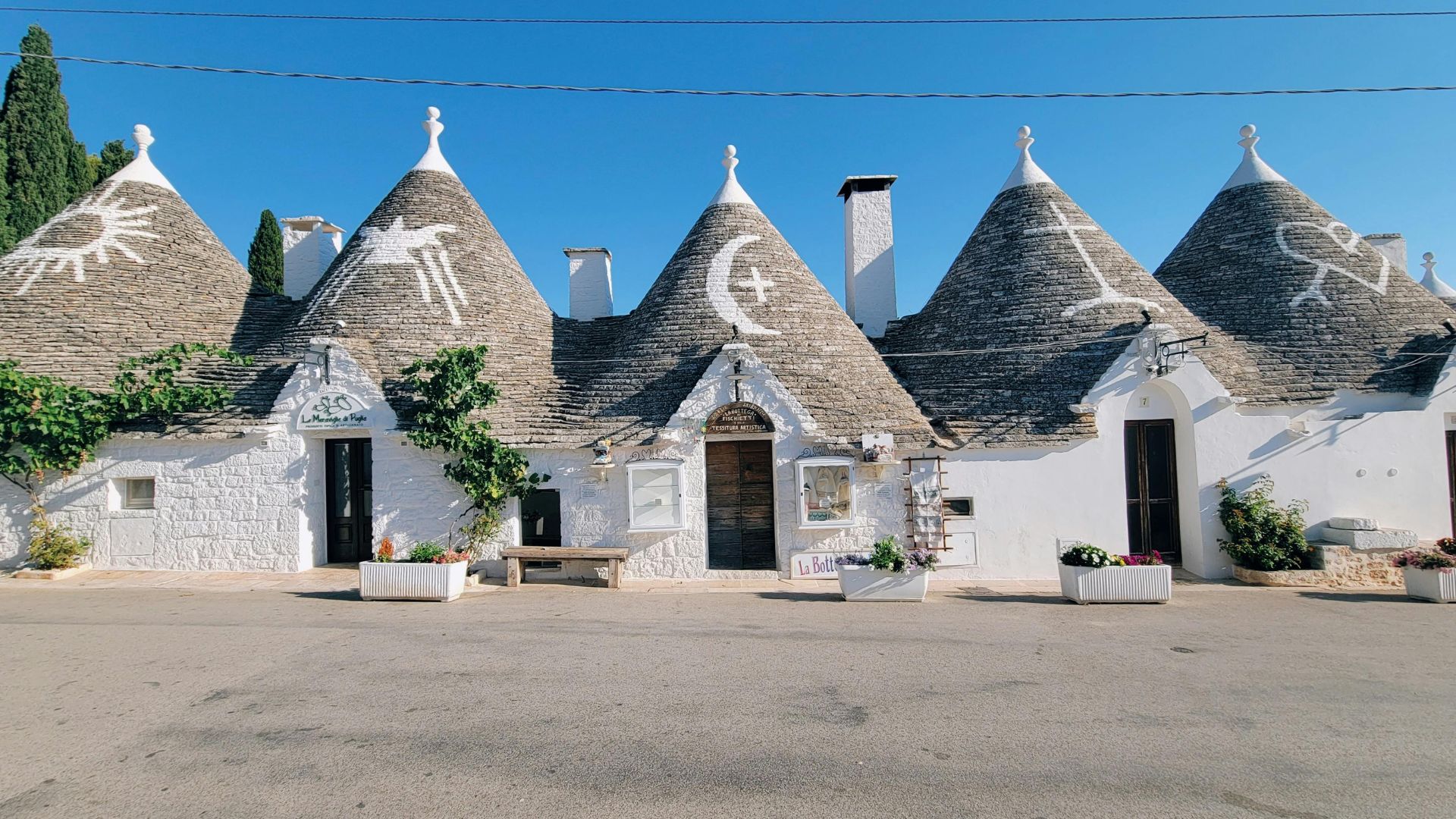
The Cultural Significance of Valle d’Itria’s Built Heritage
Valle d’Itria’s architecture is more than just stone and mortar—it’s a living record of local wisdom, community values, and how people have adapted to the Apulian landscape.
These structures have shaped daily life and become an essential part of the region’s identity.
Life Among Conical Roofs
Strolling through Valle d’Itria, I always feel like the trulli create a landscape straight out of a dream. Their conical roofs and limestone walls are a testament to ancient building techniques that families still use today.
People have adapted these homes for modern life while keeping their original charm. The stone walls keep things cool during Puglia’s scorching summers.
Inside, you’ll usually find a central room with smaller alcoves off to the sides. It makes for intimate, cozy spaces. Many trulli still have original features—stone fireplaces, built-in shelves, and all.
What gets me is how locals manage to keep these UNESCO-protected homes authentic and livable, not just showpieces for tourists.
Community Traditions and Practices
Dry stone walls snake across Valle d’Itria, marking more than just boundaries. Locals have mastered this ancient craft, and I’ve watched them carefully stack stones without a drop of mortar.
These walls do more than divide land—they help protect crops from the wind and give shelter to wildlife. They define the cultural landscape in a way that’s hard to put into words.
Throughout the year, the community comes together for festivals that celebrate local heritage. Trulli often serve as the backdrop for music, dancing, and feasts. Many events honor agricultural traditions like olive harvesting and winemaking.
Older generations still teach the young how to build with stone and farm sustainably—a tradition that’s somehow both timeless and urgently needed.
Preserving Apulian Identity
Lately, I’ve seen more and more efforts to protect Valle d’Itria’s architectural treasures from modern development. Local groups work hard to document traditional methods and encourage restoration instead of demolition.
The trulli and dry stone walls have become symbols of Apulian pride. You see them everywhere—from regional products to tourism campaigns.
Digital archives now keep family stories alive, especially for those who’ve cared for these homes for generations. Some locals even open their doors to visitors, giving a glimpse of real life among the stones.
I find it hopeful that young people here are embracing these traditions, learning old skills while finding new ways to keep rural communities thriving.

UNESCO World Heritage Recognition
The limestone houses and dry stone walls of Valle d’Itria have gained international attention for their unique architecture and cultural value. The trulli of Alberobello, in particular, made it onto the UNESCO World Heritage List in 1996.
Why Alberobello Is a UNESCO World Heritage Site
A walk through Alberobello feels surreal. Nowhere else have I seen over 1,500 conical houses packed together, creating such a whimsical landscape.
UNESCO recognized Alberobello because the trulli are an outstanding example of a prehistoric building technique. What always amazes me is how builders stacked stones, one by one, without any mortar—just balance and patience.
It’s not just about the individual houses, either. The whole settlement shows how people adapted to local conditions, using whatever materials they had to create practical, sustainable homes.

UNESCO Criteria and Protection
Alberobello earned its spot on the list for meeting UNESCO’s criteria (iii) and (iv)—bearing unique testimony to a cultural tradition, and serving as an outstanding example of architecture from a key moment in human history.
Two neighborhoods get the official protection: Rione Monti with about 1,030 trulli, and Aia Piccola with roughly 400. Strict rules keep these areas authentic.
Since becoming a World Heritage site, I’ve noticed some big changes:
- More visitors and economic growth
- Stronger conservation efforts
- More interest in traditional building skills
In 2018, UNESCO also recognized dry stone walling as Intangible Cultural Heritage, highlighting the harmony these structures create between people and nature.
Exploring Valle d’Itria: Iconic Towns and Landscapes
Valle d’Itria draws you in with its hillside towns, each with a personality of its own but all united by whitewashed buildings, twisty little streets, and sweeping countryside views.
Locorotondo’s Whitewashed Charm
Locorotondo feels like a step back in time. This round hilltop town offers some of the best views in the valley. I love losing myself in its narrow streets, where white houses sport bright flower boxes.
The name means “round place,” and you can feel it in the town’s layout. Many homes have those pointed “cummerse” roofs, which just add to the charm.
If you get a chance, visit at sunset. The buildings glow, the vineyards stretch out below, and the local white wine—Locorotondo DOC—hits the spot after a day on your feet.

Ostuni: The White City
Ostuni rises from the plain, a beacon of white visible for miles. Every time I see it, I’m struck by how the sun bounces off its whitewashed walls against the blue sky.
The old town is a maze of steps and alleys. I love wandering until I stumble onto a terrace with views of olive groves stretching to the Adriatic.
The 15th-century Gothic cathedral crowns the hill, with its rose window front and center. Local artisans sell ceramics and olive wood crafts in tiny, tucked-away shops.
If you’re visiting, get there early—before the crowds and the heat take over.
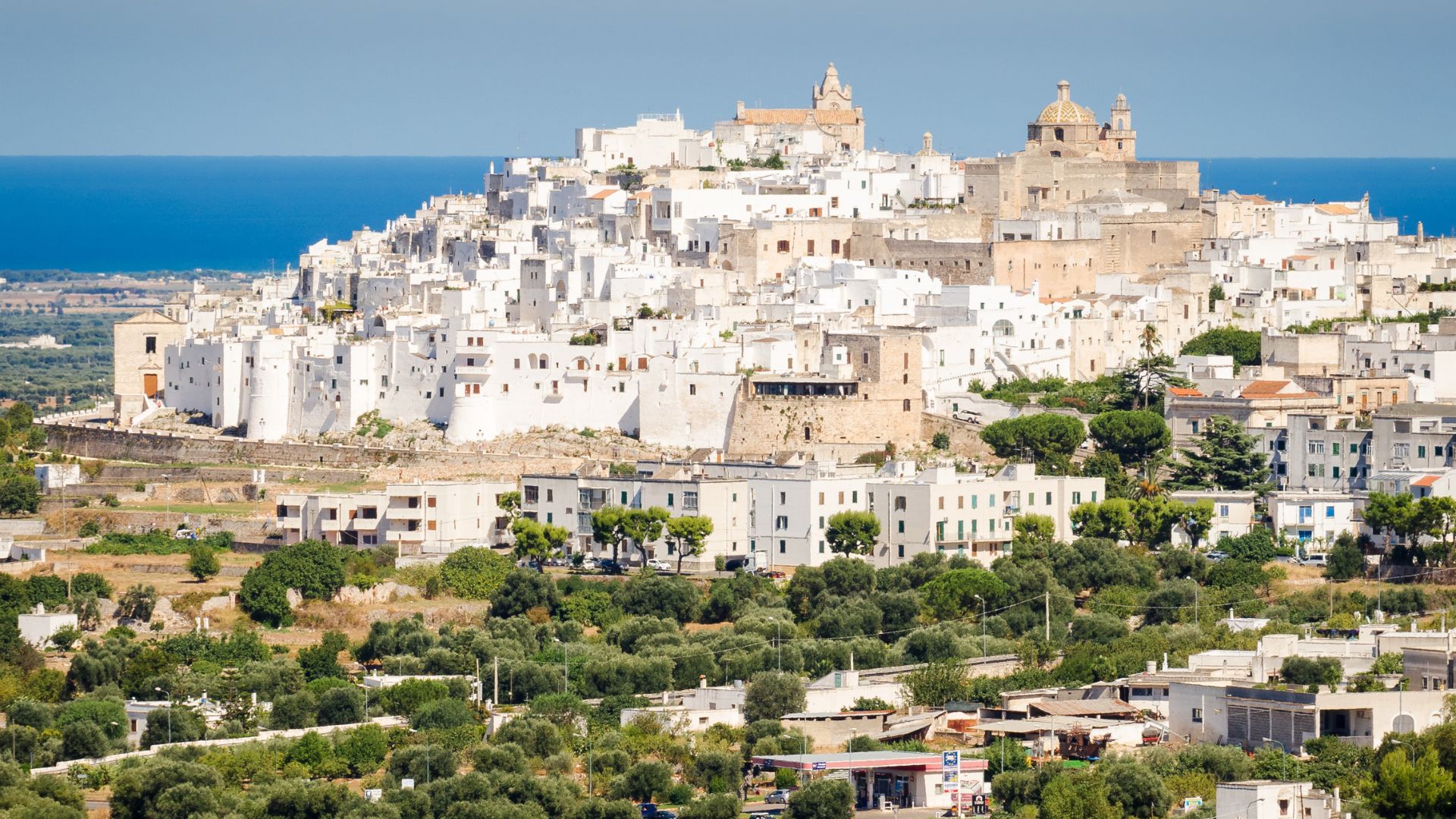
The Allure of Martina Franca
Martina Franca brings a different flavor with its stately baroque architecture. The town’s history is written in its ornate palaces and elaborate churches.
I like to start at Porto Santo Stefano, the grand gateway to the old town. From there, I meander through the narrow streets, discovering hidden piazzas and marveling at the Basilica di San Martino’s stonework.
The Palazzo Ducale, now the town hall, hosts interesting exhibits. In the summer, the Valle d’Itria Festival brings opera and classical music to these historic settings.
And the food—don’t leave without trying capocollo, the local cured meat that’s a real treat.
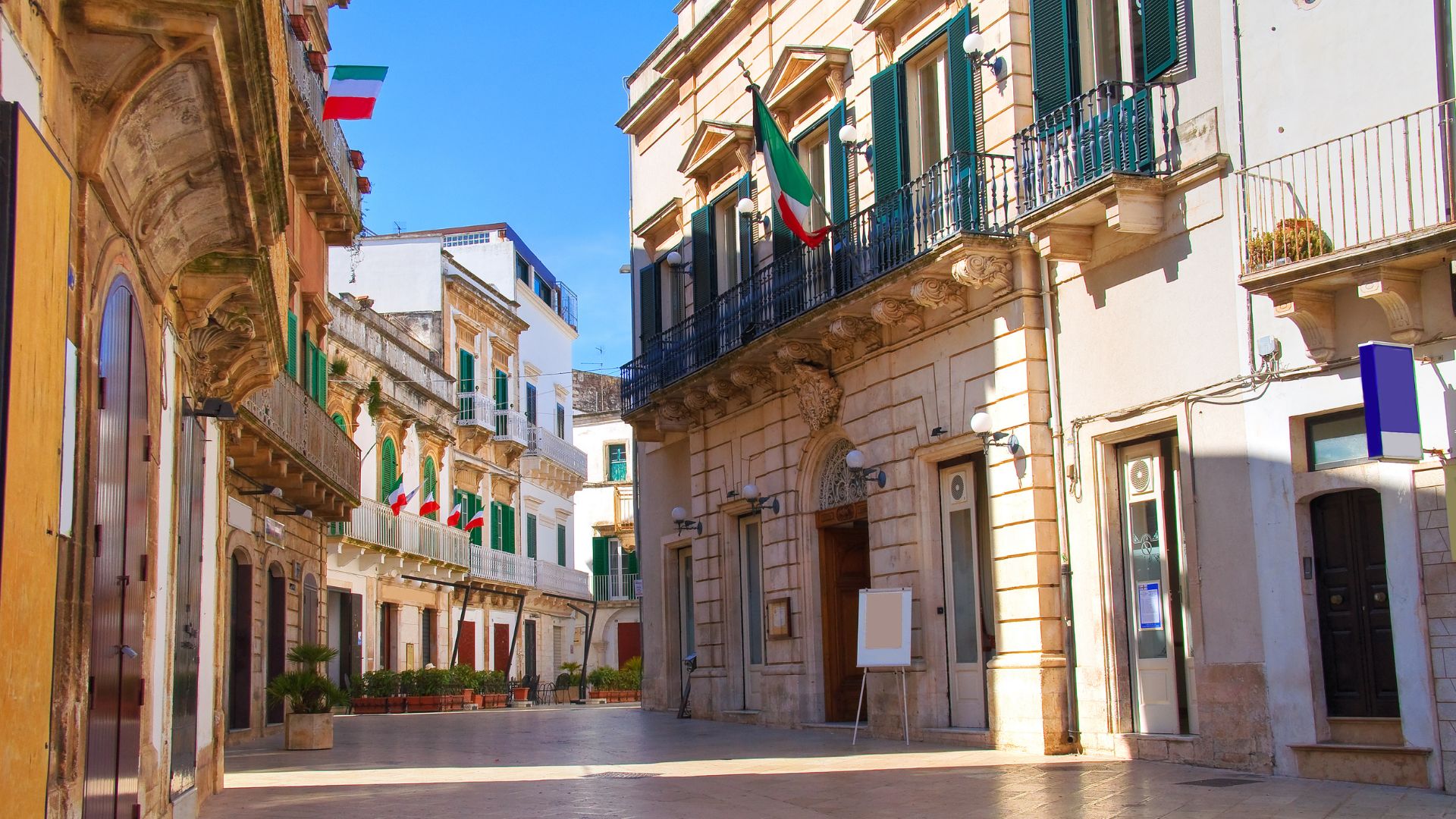
Cisternino’s Village Vibes
Cisternino feels like Valle d’Itria’s best-kept secret. It’s smaller, quieter, and has a laid-back charm that I find irresistible.
The old center is compact, with whitewashed homes, outside staircases, and balconies overflowing with flowers. Sometimes, narrow lanes open up into tiny courtyards called “vignali.”
The real highlight? The “fornelli pronti” butcher-restaurants. You pick your meat at the counter, and they grill it up for you on the spot. Eating this simple meal with a glass of local primitivo in a sunlit piazza is one of my favorite memories here.
The Torre Normanno gives you great views over olive groves and scattered trulli.
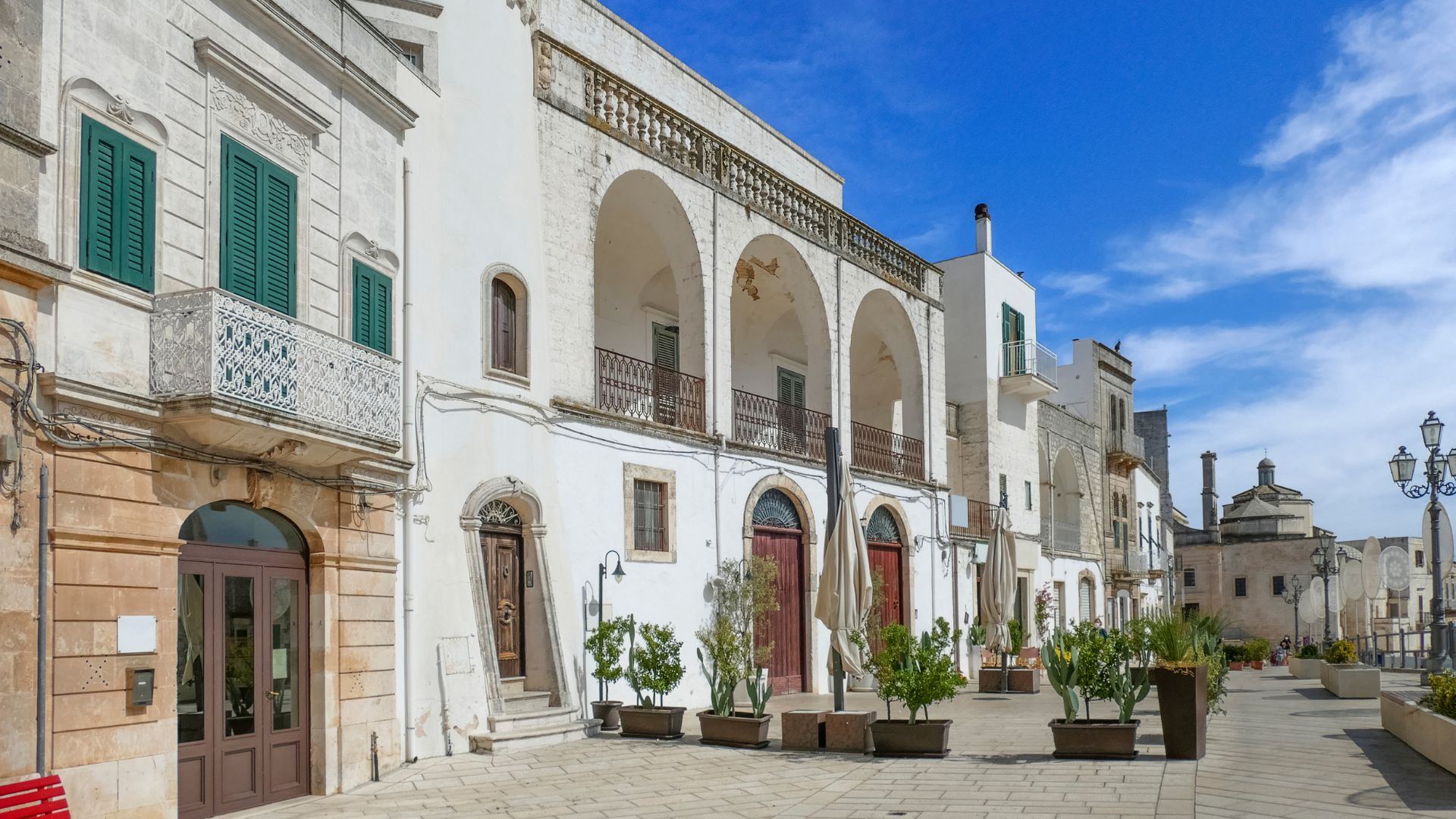
Practical Travel Tips and Visual Inspiration
Valle d’Itria rewards travelers who take their time. I’ve found that slow travel is the best way to soak up the magic of this special region in Puglia.
How to Experience Authentic Trulli
I’d base myself in one of the main towns, like Alberobello, for a few days. From there, you can rent a small car and just wander the countryside at your own pace.
These days, lots of trulli are vacation rentals, so you get to sleep inside these quirky, historic homes. That’s not something you forget easily.
Spring (April-June) or early fall (September-October) feels like the sweet spot for a visit. The weather’s usually perfect, and you won’t have to fight through crowds.
During those months, the countryside either explodes with wildflowers or hums with harvest activity. It’s hard not to get swept up in it.
If you want a slice of real local life, check out the weekly markets in Martina Franca on Wednesday mornings or in Locorotondo on Fridays. You’ll find local produce, cheeses, and handcrafts—stuff that ties you to the traditions here.
You’ve got to try the regional “capocollo” in Martina Franca. And if you’re in Locorotondo, the white wine is honestly worth a detour.

Recommended Walking Routes and Hidden Gems
One route I love starts in Locorotondo. It follows a panoramic path around the old town, then slips into the countryside.
You’ll wander past trulli, vineyards, and olive groves, all lined by ancient stone walls. It’s the kind of walk that makes you slow down and just look around.
If you want something quieter, head to Cisternino’s hidden valleys. I once stumbled into those peaceful lanes just outside town—trulli still stand there, used by local farmers, and barely a tourist in sight.
Between Alberobello and Martina Franca, you’ll find a web of country lanes perfect for walking or cycling. Keep an eye out for the little white chapel of Madonna della Catena. It’s a peaceful spot, and most guidebooks don’t even mention it.
You’ll probably fly into Bari (about 60-90 minutes by car) or Brindisi (30-60 minutes). Honestly, you’ll need to rent a car if you want to see the countryside properly.
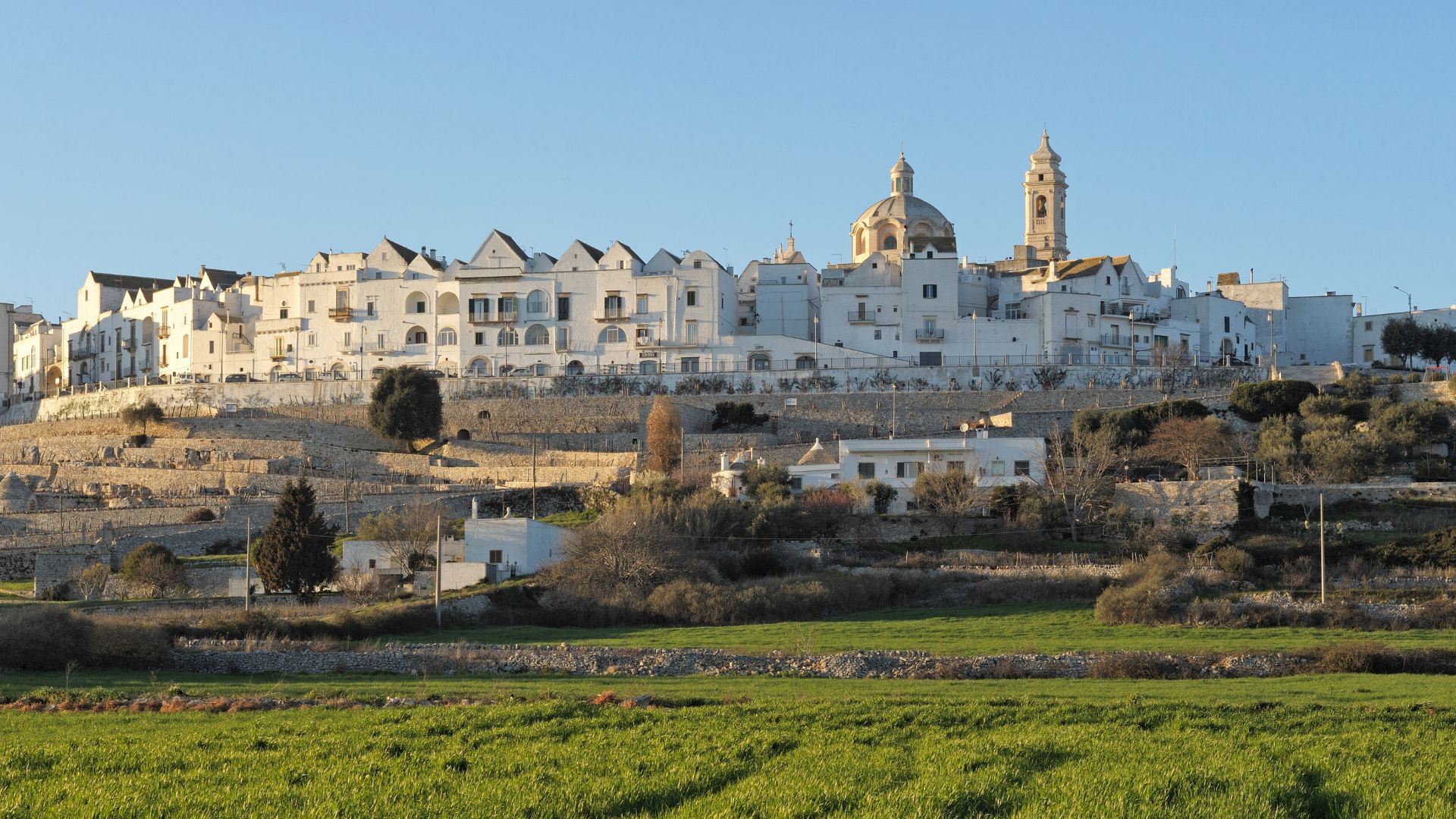
Capturing the Landscape: Stock Photos, Images, and Exclusive Videos
Early morning brings this soft, golden light that turns trulli silhouettes into something magical against the misty fields. Honestly, I think the road between Locorotondo and Martina Franca gives you the best panoramic views for photography.
If you’re after exclusive videos, try filming the sunset from Locorotondo’s viewpoint. Or maybe capture local artisans as they restore dry stone walls—it’s surprisingly compelling to watch.
Most stock photos? They’re everywhere, but they miss those intimate details that make this region feel so unique. I always suggest photographing the geometric patterns on the stone roofs or the wild orchids popping up along the paths in spring.
If you’ve got a drone (and it’s allowed), fly it over the Valle’s patchwork landscape for some truly stunning aerial shots. The way the white trulli, green fields, and gray stone walls all contrast from above—it’s just striking.

